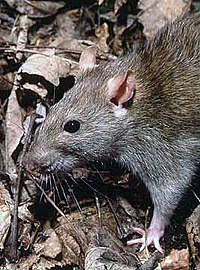
Photo from wikipedia
Objectives Recent studies show that cats could play an important role in the transmission of Leptospira species. There are few reports of leptospirosis on Prince Edward Island (PEI) and none… Click to show full abstract
Objectives Recent studies show that cats could play an important role in the transmission of Leptospira species. There are few reports of leptospirosis on Prince Edward Island (PEI) and none in cats. The objective of this study was to determine the prevalence of serum antibodies against Leptospira serovars and of Leptospira DNA in the urine of a population of free-roaming cats. Methods Paired blood and urine samples were collected from 200 cats brought to a trap–neuter–return program. Antibody titers against six Leptospira serovars (Bratislava, Canicola, Gryppotyphosa, Hardjo, Pomona, Icterohaemorrhagiae) were determined by microscopic agglutination test. PCR was performed on urine samples to identify urine shedding of Leptospira DNA. Results Antibodies were detected in 20/200 cats (10%) for at least one serovar, with titers ranging from 1:50 to 1:6400 (all serovars tested, except Hardjo). Urine samples of 7/200 cats (3.5%) were PCR-positive. Conclusions and relevance Feral cats in PEI had a higher than expected exposure to leptospirosis and can shed DNA from pathogenic Leptospira species in urine. Further studies are needed to determine the prevalence of exposure to leptospirosis in other species on PEI and the potential role of feral cats in transmission of the disease.
Journal Title: Journal of Feline Medicine and Surgery
Year Published: 2021
Link to full text (if available)
Share on Social Media: Sign Up to like & get
recommendations!